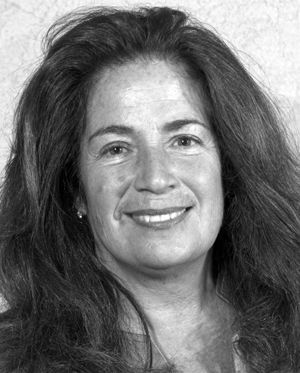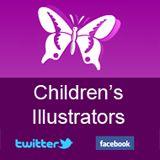How did you get started in publishing and what have been some of the highlights of your career so far?
I’ve been in various aspects of publishing for my entire career. Having graduated with a degree in journalism, my first job was in the magazine world from which I worked my way up to publisher of a parenting magazine, before becoming a children’s book publisher. Along the way, I owned a small printing company for a number of years, one of the few women-owned printing companies in the country.
What is Kar-Ben’s day-to-day relationship with Lerner Publishing Group?
Kar-Ben is the Jewish-themed children’s book imprint of children’s book publisher Lerner Publishing Group. While we are a separate division with our own editorial, sales and marketing, we share Lerner’s art, production and digital book departments.
How would you describe the type of illustration Kar-Ben Publishing is interested in commissioning?
Kar-Ben uses a wide variety of illustration techniques and styles for its books. We carefully match the style and medium of a particular illustrator with the theme of a particular story. With digitization we are now able to work with an international roster of artists who bring an even wider variety of technique, sensibility and imagination to our books. The biggest challenge for Kar-Ben is making sure the research side of our Jewish-themed books is well done. Jewish customs, ritual objects and other details must be absolutely correct, potentially a challenge for illustrators not familiar with the Jewish world.
Describe the process of creating a children’s book at Kar-Ben. What are the various stages involved in the journey and who are the decision makers?
Kar-Ben publishes 15-18 new titles each year selected from more than 800 manuscripts. We acquire a picture manuscript, the editorial team edits it and breaks the text into spreads, providing text-related art direction for the art department. A book designer is assigned and selects a format for the book, laying out the book with art direction based on the editor’s instructions. In the meantime, we create a profile for the book – what are the ages of the characters in the book, what is the age range of potential readers, where does the story take place, do we need an artist who does a good job with human faces, nature, animals, etc.? I then contract with an artist whose work fits our criteria.
Visually-speaking, which 3 recent titles from the Kar-Ben children’s list are you particularly proud of and why?
Rifka Takes a Bow, which was published last year, is especially wonderful. I paired this story about a little girl growing up the Yiddish Theater world in 1920s New York City with gorgeous art by Japanese illustrator Cosei Kawa, not at all the sort of art one would expect with a book on this theme. This unusual pairing of artist and subject helped garner the book terrific reviews (including one from the New York Times!) and it has sold very well. His art conveyed the magic of theater in a way that made the story universal.

Our Holocaust story about Kristallnacht as seen through the eyes of a cat, Benno and the Night of Broken Glass, illustrated by French Canadian illustrator Josee Bisallion is another one of my favorites. Her broken-edged collage-style art was a beautiful fit for the “broken glass” theme of this book as well as its red/orange/black palette reflecting the flames of Kristallnacht.

![]()
I also really liked the unusual illustrations by Natalia Vasquez for No Baths at Camp, a story about a little boy who goes to a Jewish summer camp. While the story would have been cute no matter what, the unusual art really made this book into something even more engaging.

How has the Jewish children’s literature market evolved since you were a child?
When I was a child there were virtually no Jewish-themed children’s books available beyond the iconic “All-Of-A-Kind Family” stories. When my children were little, in the 1980s, there were still very few Jewish-themed titles available and the ones that were out there were 2-color paperbacks that couldn’t compete for production values with the beautiful secular picture books being published. Both the subject matter and quality of production were limited. Today that is no longer the case! Kar-Ben is the largest publisher of Jewish children’s books in America, with a backlist of over 300 titles serving a wide range of Jewish experience, from a Shabbat story set in a “traditional” Jewish family, to a recent Purim story set in a household with two gay dads. Our production values are gorgeous. We publish books on Jewish holidays, Jewish history, Bible stories, stories about or that take place in Israel, Jewish folktales and (only very child-accessible) stories about the Holocaust, with the goal of making sure every Jewish family, no matter its level of observance or interest, can feel included in the community.
Have you had any significant mentors during your career?
The founders of Kar-Ben Publishing, Judye Groner and Madeline Wikler, have been significant mentors to me. When Lerner purchased Kar-Ben over 10 years ago, Judye and Madeline stayed on as my editorial directors and I learned much from them. They retired at the end of 2013.
Which project has presented the greatest challenge so far?
I don’t want to identify a particular project, but publishing a book can be challenging on a number of fronts. From negotiating contracts, to dealing with missed deadlines, challenges abound. One big challenge though — and it’s only happened a couple of times – is when an illustrator’s final art doesn’t come in looking like the style in his/her portfolio on which I based my choice, requiring finished art to be either accepted (bad for me) or redone (bad for the illustrator). I’ve learned to avoid this situation through good communication and clear expectations, from requiring a sample spread of final art at sketch stage or other spot checks built into the process.
Thanks for your time Joni, any final comments you would like to add?
Happy to participate! We accept unsolicited manuscripts from authors. All Jewish-themed subjects are welcome.
This interview has been syndicated courtesy of Childrensillustrators.com








